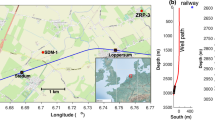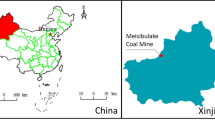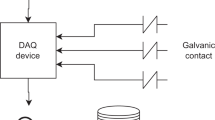Abstract
IN 1965 a high voltage d.c. line, 580 km long, began operation, bringing power from the Benmore hydroelectric power station in the South Island of New Zealand to the Haywards terminal in the North Island (Fig. 1). Initially, the return path of the current was through the ground from which an approximately dipole pattern of potential might be expected on the Earth's surface. This potential would not in general be separable from other ground potentials of natural or artificial origin. Load changes in the Benmore–Haywards system are, however, carried out in steps of 20 MW, or 80 amp in line current. The consequent abrupt changes in ground potential can be observed for considerable distances from the electrodes provided there is no great telluric activity at the time.
This is a preview of subscription content, access via your institution
Access options
Subscribe to this journal
Receive 51 print issues and online access
$199.00 per year
only $3.90 per issue
Buy this article
- Purchase on Springer Link
- Instant access to full article PDF
Prices may be subject to local taxes which are calculated during checkout
Similar content being viewed by others
References
Lundholm, R., Proc. Conf. Intern. Grande Reseaux Electriques à Haute Tension, paper 134 (1946).
Weise, H., in Geomagnetische Tiefentellurik, 37 (Akademie Verlag, Berlin, 1965).
Cantwell, T., Nelson, P., Webb, J., and Orange, A. S., J. Geophys. Res., 70, 1931 (1965).
Author information
Authors and Affiliations
Rights and permissions
About this article
Cite this article
GILL, P., MACDONALD, W. Large Scale Earth Resistivity Experiment in New Zealand. Nature 216, 1195–1197 (1967). https://doi.org/10.1038/2161195a0
Received:
Revised:
Published:
Issue Date:
DOI: https://doi.org/10.1038/2161195a0
Comments
By submitting a comment you agree to abide by our Terms and Community Guidelines. If you find something abusive or that does not comply with our terms or guidelines please flag it as inappropriate.



